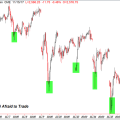- Ripple lawsuit ruling by Judge Analisa Torres is considered a roadmap for crypto firms as it applies Howey analysis to digital assets.
- Legal expert J W Verret argues that the facts and circumstances of cryptocurrency offers and sales matter under existing securities law.
- XRP price defends $0.60 level, despite wiping out weekly and monthly gains.
The SEC v. Ripple lawsuit offers legal experts a lens to re-examine the application of existing securities law to digital assets like XRP. Judge Torres’ ruling prevented the SEC’s circumvention of existing laws and enabled adaptive regulation, rather than a stifling approach.
Legal expert J W Verret weighed in on the outcome of the SEC v. Ripple lawsuit and observed that the ruling is a roadmap for crypto firms to navigate regulatory pressures.
XRP price defended the $0.60 level, early on Tuesday, despite market wide correction in cryptocurrency prices.
Also read: Pro-XRP attorney slams former SEC Chair, XRP price plummets in market wide crash
Daily Digest Market Movers: Ripple roadmap paves way for crypto regulation
- Legal experts like Law professor J W Verret believe the Ripple lawsuit and Judge Torres’ ruling have paved way for the regulation of cryptocurrencies without stifling innovation.
- Judge Torres’ July 13 ruling offered partial victory to Ripple as it cleared XRP’s status as a non-security. Verret argues that Torres applied the Howey Test from 1946 to XRP and prevented the US financial regulator, Securities and Exchange Commission (SEC) from arguing alternative facts, in a recent report.
- Judge Torres reviewed all individual sales categories and noted that the vast majority of them were blind bid/ask transactions and do not qualify as securities sales.
- The Judge acknowledged affidavits submitted to the court and concluded that XRP is not a security.
- The financial regulator’s failure to show how Ripple’s public communications about XRP could have reached the asset’s buyers proved that the token is not a security and there is no investment contract between XRP buyers and Ripple.
Technical Analysis: XRP price defends $0.60 in recent decline
Bitcoin price wiped out recent gains and retreated below the $42,000 mark on Tuesday. Altcoins followed suit, with XRP wiping out its monthly and weekly gains. The altcoin defended the $0.6000 level and sustained above its 50- and 200-day Exponential Moving Averages (EMA) at $0.6119 and $0.5589, as seen in the chart below.
A daily candlestick close below $0.6000 could validate the bearish thesis and push XRP price lower to $0.5456.
XRP/USDT 1-day chart
As the altcoin sustains above its two long-term EMAs, XRP price is likely to make a recovery to the $0.6820 level, previously seen on December 9.
Crypto ETF FAQs
An Exchange-Traded Fund (ETF) is an investment vehicle or an index that tracks the price of an underlying asset. ETFs can not only track a single asset, but a group of assets and sectors. For example, a Bitcoin ETF tracks Bitcoin’s price. ETF is a tool used by investors to gain exposure to a certain asset.
Yes. The first Bitcoin futures ETF in the US was approved by the US Securities & Exchange Commission in October 2021. A total of seven Bitcoin futures ETFs have been approved, with more than 20 still waiting for the regulator’s permission. The SEC says that the cryptocurrency industry is new and subject to manipulation, which is why it has been delaying crypto-related futures ETFs for the last few years.
Bitcoin spot ETF has been approved outside the US, but the SEC is yet to approve one in the country. After BlackRock filed for a Bitcoin spot ETF on June 15, the interest surrounding crypto ETFs has been renewed. Grayscale – whose application for a Bitcoin spot ETF was initially rejected by the SEC – got a victory in court, forcing the US regulator to review its proposal again. The SEC’s loss in this lawsuit has fueled hopes that a Bitcoin spot ETF might be approved by the end of the year.




